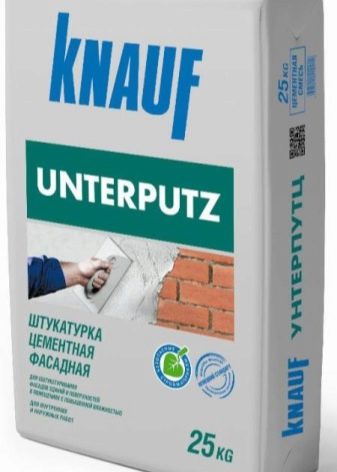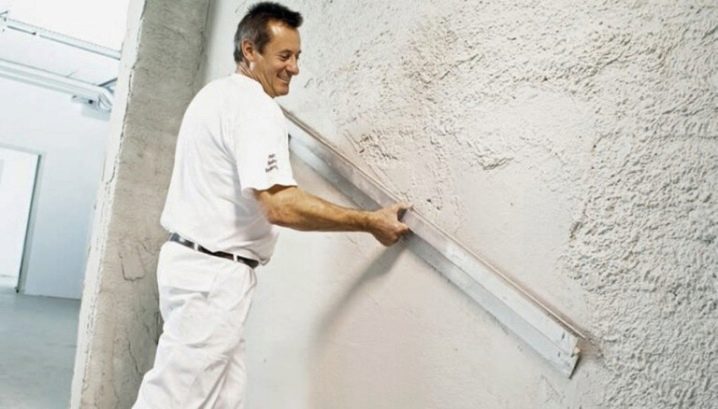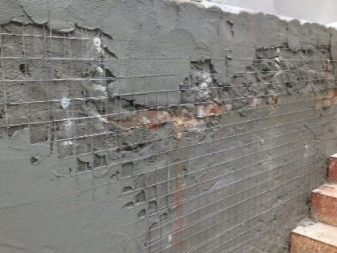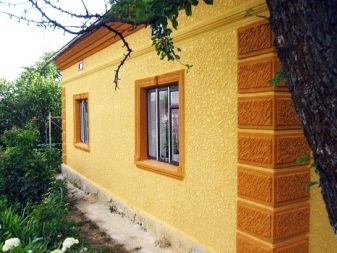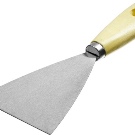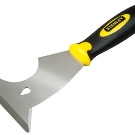Gypsum or cement plasters: which compounds are better?
In any repair without plaster can not do. With its help various surfaces are processed. There are plaster or cement plasters. Which formulations are best used depends on several factors, which will be discussed below.
Species
This type of coating varies in purpose. Conventional plaster is used for construction work. With its help you can level the surface, seal the seams, reduce heat loss. It can perform noise insulation function or serve as fire protection.
Decorative plaster is a mixture of different colors. and is used for finishing the premises, and such a plaster has recently gained popularity.With it, you can implement very interesting ideas in the design of rooms for different purposes.
Plaster is subdivided into types, depending on what component in it is the main - cement or lime, clay or gypsum. There are other options with the addition of certain substances. But many are inclined to believe that the best plaster or cement plaster.
Before you choose one or another type of plaster, you need to make a comparison, and decide - what characteristics at the moment when carrying out repairs will be preferable.
Of plaster
This plaster is usually prepared from powder, diluted with water in the required proportions that are indicated on the package. As a result, it should be a paste, which is often applied in one layer.
This solution is used to align the walls, preparing for painting or wallpapering. This is what distinguishes plaster from putty, which, in turn, is used when there are more significant defects in the form of cracks and holes on the surface.
Gypsum plaster has several advantages:
- Essential is that it belongs to environmentally friendly materials.
- With it, the walls can be made perfectly smooth.
- This type of coating does not shrink, and after its complete drying, the appearance of cracks on the surface is excluded.
- Its weight is light enough, so there is no load on the walls.
- The elastic structure allows you to apply dense layers of the composition on the walls, if necessary. But even then you can be calm and not worry that a crack may appear somewhere.
The difference between gypsum and cement is that the reinforcing mesh is not required when carrying out the work, while it is simply necessary when using cement-sand plaster. Due to the porosity of gypsum plaster, the walls do not suffer from moisture. And this is a very big plus. After all, no one wants to fight with fungus and mold. Due to the low thermal conductivity of gypsum, the walls retain heat. And in terms of sound insulation performance of this material is quite high.
The speed of repair using plaster plaster depends on what layer will be applied to the wall. If very thick, for reliability it is better to wait a week. With a thin coating, two days are enough.
There are some drawbacks to gypsum plaster, although very few. The minus, which is not so significant for many, is the difference in price compared to other types, for example, with cement plaster, which can be one and a half, or even two times cheaper.
And one moment. Gypsum plaster can not be applied in areas where the humidity is constantly increased.
From cement
This plaster can always be made with your own hands quickly enough. You need to have on hand water, cement, lime. Sometimes sand is also used in its preparation.
This plaster also has a wide range of possibilities. It is indispensable when processing the walls in the bathroom or pool, kitchen or basement. It is good to finish with its help the outer walls and basement, where increased frost resistance is required.
If we talk about the merits of this type of solution, it is durable and reliable, this is no doubt. Many consider these indicators particularly important when they opt for cement. This composition fits well on any surface. Its density does not allow moisture to penetrate inside and damage the structure.The price of cement plaster is low, which allows you to buy it at any time.
There are also disadvantages and they must be taken into account. We must not forget about the thickness of the applied layer, here we must remember that the weight of cement plaster is large enough. When plastering the ceiling, such a composition is rarely used. Incompatible this type of mixture with wooden, plastic and painted surfaces.
At its drawing alignment and a zatirka is necessarily required. Dries this composition for a long time. It can completely harden after three, and in some cases even after four weeks. But when choosing cement plaster in hardware stores, you need to pay attention to the fact that now many manufacturers have been able to improve this composition. By adding certain components, the cement can be made more elastic and shortens the drying time of the surface.
How to apply?
When studying the positive and negative characteristics of the compositions, it is necessary to pay attention to which of them will be more convenient in each specific case, and whether additional materials will be required during repairs.
Gypsum plaster has almost no flaws. But with insufficient speed of work, the prepared solution can dry out, you have to make a new one. And the price of this material is not low. Therefore, in the absence of experience it is best to do the solution in small batches. Perhaps this will not save time, but you can be sure that all the plaster will go to work, and not to waste.
Cementing of the surface requires the installation of valves. Dries the solution for a long time. Therefore, we can safely breed a large amount and immediately cover large areas.
There is another important tip. Works need to be performed at a positive temperature ranging from five degrees. Be sure to pre-use a primer with deep penetration. Before you apply the next layer, you must completely let the previous one dry.
Each method and solution has its own advantages. This is what the reviews say. Those who proceed to repair, as a rule, are already familiar with the characteristics of the materials they plan to use. Therefore, there are no surprises.
Some say that outdoor work is easy and fast because of the cement mortar. The duration of drying pays off by the fact that this treatment will last a long time.Others share the experience of applying gypsum plaster in rooms, and at the same time praise her for the fact that after its application with the walls, you can perform any manipulations, provided that the whole process is followed.
The paint goes perfectly. Wallpapers do not bubble and do not fall off. And this is a very important factor.
The details of the preparation of mixtures
The initial stage in any repair work is the preparation of the necessary compositions and tools. The first step is to mix the dry ingredients, the second is to add water.
The preparation of each plaster has its own nuances:
- The powder components of the cement plaster (cement and sand) are combined in the first place. Only after thorough mixing can they add water. Then it all mixes well until smooth. It will not be difficult to prepare a plaster in which both gypsum and cement will be present. This solution will dry faster, but will become less durable.
- Preparation of gypsum plaster takes literally five minutes. First, the gypsum is brought to the consistency of the dough, and then, if necessary, water is added to make exactly the composition that is needed in terms of density.
Required tools
When applying both plaster need certain tools that need to stock up in advance. It is possible that in the course of the work it will become clear that somewhere on the surface there is an old coating.
Therefore, you will need the following tools:
- spatulas;
- scrapers;
- metal brushes;
- hammer;
- sandpaper;
- capacity for the mixture;
- trowel;
- electric drill or mixer;
- level.
From all of the above, we can conclude that each plaster is indispensable for repairs, it all depends on what surfaces it should be treated. With the observance of all the technologies, it is possible to perfectly process the exterior walls, basements with cement plaster, and use gypsum in the rooms.
On the fundamental differences between different types of plaster, see below.


